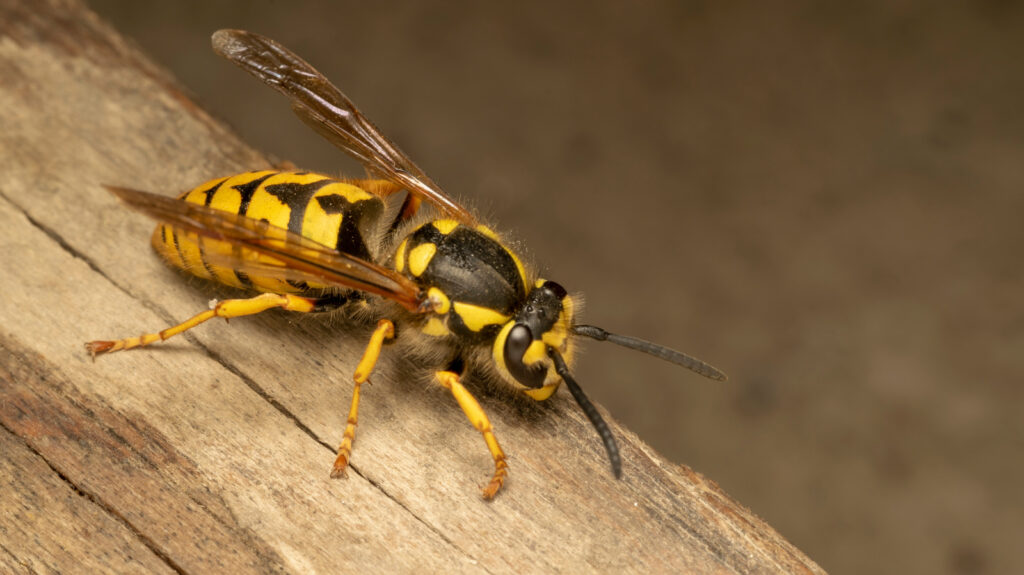Introduction to Yellow Jackets
As the warm weather rolls in, picnics and barbecues beckon. But lurking around your outdoor gatherings could be a buzzing menace: yellow jackets. These aggressive little pests can turn a lovely day into a frantic chase for safety. With their striking black-and-yellow stripes, they might look harmless at first glance, but don’t let appearances fool you—yellow jackets are notorious for their stings and can ruin any outdoor fun.
But fear not! There are natural ways to reclaim your space without resorting to harsh chemicals or dangerous traps. If you’re wondering how to get rid of yellow jackets sustainably and effectively, you’ve come to the right place. Let’s explore some eco-friendly methods that will help you enjoy your outdoor activities while keeping these pesky insects at bay.
Why Get Rid of Yellow Jackets?
Yellow jackets can wreak havoc during outdoor activities. Their aggressive nature makes them a threat, especially when food is around.
These insects aren’t just annoying; they can deliver painful stings. For those allergic to their venom, the consequences could be severe. One sting might lead to serious health complications.
Moreover, yellow jackets are territorial. If you accidentally disturb their nest, it could provoke an entire swarm. This not only creates panic but also puts everyone nearby at risk.
In gardens and yards, yellow jackets disrupt the peace. They often invade picnics or gatherings without invitation. Their presence can dampen even the most enjoyable summer day.
Getting rid of them helps restore comfort and safety outdoors. It’s about enjoying your space without fear of sudden attacks while savoring that delicious barbecue with friends and family.
Natural Ways to Repel Yellow Jackets
Natural methods to repel yellow jackets can be both effective and environmentally friendly. One of the simplest approaches is planting certain herbs and flowers that they dislike. Marigolds, mint, and basil are excellent choices. These plants not only enhance your garden but also deter pesky insects.
Another clever method involves creating homemade traps using common kitchen ingredients. A simple mixture of sugar water or soda in a plastic bottle with a cut-off top serves as an enticing bait while trapping them inside.
Essential oils like peppermint, citronella, and eucalyptus can act as deterrents too. Mixing these oils with water in a spray bottle allows you to create a natural repellent for outdoor gatherings.
Remember to implement these strategies during warmer months when yellow jackets are most active. By embracing nature-friendly tactics, you can enjoy your space without unwelcome visitors buzzing around.
A. Planting Certain Herbs and Flowers
Certain herbs and flowers can act as natural repellents against yellow jackets. By strategically planting these around your yard, you create a less inviting environment for these buzzing intruders.
Mint is particularly effective. Its strong scent masks food odors that attract yellow jackets. Consider placing pots of mint near outdoor dining areas or picnic spots.
Another great option is basil. Not only does it enhance your culinary dishes, but its aroma also deters many pests, including wasps.
Marigolds are another ally in the battle against yellow jackets. Their vibrant colors brighten up any garden while releasing compounds that repel various insects.
Planting these herbs and flowers not only beautifies your space but fosters an ecosystem where beneficial insects thrive without attracting unwanted visitors like yellow jackets. It’s a simple yet impactful way to enjoy your outdoor spaces more safely.
B. Setting up Traps and Deterrents
Setting up traps is an effective way to manage yellow jackets without resorting to harmful chemicals. You can create a simple trap using a two-liter soda bottle. Cut the top off and invert it into the bottom half, then fill it with sugar water or fruit juice mixed with vinegar.
Another option is commercial traps available at garden centers. These often contain lures that attract yellow jackets while keeping them contained.
Deterrents also play a crucial role in your strategy. A mixture of peppermint oil and water can be sprayed around outdoor areas to repel these pests naturally. Yellow jackets are sensitive to strong scents, making this an excellent alternative.
Additionally, placing decoy nests around your property can deter new colonies from settling in. Yellow jackets are territorial and may avoid areas where they perceive other nests exist.
What Not to Do When Trying to Get Rid of Yellow Jackets
When dealing with yellow jackets, there are some approaches you should avoid. Swatting at them can be a big mistake. It may provoke them, leading to aggressive behavior.
Don’t use chemical sprays indiscriminately. These can harm beneficial insects and disrupt the ecosystem around you. Plus, they might not even solve your yellow jacket problem in the long run.
Avoid leaving food out during outdoor gatherings. Yellow jackets are attracted to sugary drinks and leftovers. Clean up promptly after meals to reduce their appeal.
Never ignore nest locations when trying to deter them. If they’re nearby, it’s better to address the nest directly rather than just repelling individuals that come near.
Don’t attempt removal without proper safety gear if you’re confronting a nest directly. Protecting yourself is crucial; these wasps can become defensive quickly if they feel threatened.
Prevention Tips for Avoiding Yellow Jacket Infestations
To keep yellow jackets at bay, start by managing food sources. Store all food in sealed containers and clean up spills promptly.
When dining outdoors, cover trash cans tightly. Yellow jackets are drawn to the scent of leftovers. Keeping garbage contained reduces their attraction.
Consider sealing entry points around your home. Cracks and gaps in windows or walls can serve as easy access for these pests.
Choose your landscaping wisely; avoid overly sweet-smelling flowers that attract them. Instead, focus on plants that deter insects naturally.
Be mindful during late summer when yellow jacket activity peaks. Take extra precautions if you notice nests nearby; early detection is key to prevention efforts.
Why are yellow jackets a nuisance?
Yellow jackets can quickly become a nuisance for several reasons. Their aggressive behavior, especially when defending their nests, puts people at risk during outdoor activities. A sudden encounter with these wasps can lead to painful stings and potential allergic reactions.
Additionally, yellow jackets are attracted to food sources like sweet drinks and picnics. This makes them unwelcome guests at barbecues or gatherings in the backyard. Their incessant buzzing around food can spoil a pleasant day outside.
Unlike honeybees, which contribute positively to the ecosystem by pollinating plants, yellow jackets are opportunistic scavengers. They invade garbage cans and compost heaps, further adding to their undesirable reputation. The combination of aggression and attraction to human environments creates an ongoing challenge for those trying to enjoy nature without disturbance from these pesky insects.
Natural methods to repel yellow jackets
Natural methods to repel yellow jackets can be both effective and eco-friendly. One approach is incorporating essential oils into your routine. Oils like peppermint, clove, and lemongrass are known for their strong scents that deter these pesky insects. A simple mixture of water and a few drops of essential oil in a spray bottle can serve as an aromatic barrier.
Additionally, consider planting certain herbs around your home. Marigolds, mint, and basil not only enhance your garden but also act as natural repellents against yellow jackets. The fragrances they emit are unappealing to these wasps.
Another method involves creating traps using common household items such as soda bottles filled with sugar water or vinegar. This DIY trap lures yellow jackets while keeping them away from your outdoor activities. Using these natural tactics ensures you’re taking care of unwanted guests without harming the environment or other beneficial insects nearby.
Creating a homemade yellow jacket trap
Creating a homemade yellow jacket trap is simple and effective. Start with a plastic bottle, preferably two liters in size. Cut the top off just below the neck to create a funnel.
Next, invert the cut-off portion into the bottom part of the bottle. This design allows yellow jackets to enter but makes it difficult for them to escape.
Add some bait inside. Sweet options like sugary soda or fruit juice work wonders. You can also try incorporating protein like tuna or chicken broth since yellow jackets are attracted to both sweet and savory scents.
Place your trap away from high-traffic areas but near where you’ve noticed their activity. This strategic placement increases your chances of catching these pests without disturbing others around you.
Check your traps regularly, emptying out any captured wasps and replenishing bait as needed. It’s an eco-friendly way to manage these pesky insects while keeping nature at bay.
Using essential oils as a deterrent
Essential oils can be a powerful ally in the battle against yellow jackets. Their strong scents often repel these pesky insects, making them an excellent natural deterrent.
Peppermint oil is particularly effective. Its intense aroma not only wards off yellow jackets but also leaves your outdoor space smelling fresh. Mix a few drops with water in a spray bottle and apply it around areas where you notice their activity.
Clove and lemongrass oils are other great options to consider. These scents are less appealing to yellow jackets while being pleasant for humans.
For best results, reapply the mixture regularly, especially after rain or heavy winds which can dilute the scent’s effectiveness. Always use caution when spraying near food or pets; keeping essential oils away from those areas will ensure everyone stays safe while enjoying your pest-free environment.
Planting certain herbs and flowers to keep them away
Certain herbs and flowers can act as natural repellents against yellow jackets. By incorporating these plants into your garden, you can create an environment that discourages their presence.
Mint is a powerful option. Its strong scent not only refreshes the air but also keeps yellow jackets at bay. Consider planting various types of mint, such as spearmint or peppermint, to maximize the effect.
Marigolds are another great choice. Their vibrant colors add beauty while exuding a scent that many insects find unappealing, including yellow jackets.
Basil is versatile in both cooking and pest control. The aroma of basil wards off unwanted visitors while enhancing your culinary dishes.
Planting these herbs and flowers in strategic locations around your home helps establish a barrier against pesky wasps without resorting to chemicals or pesticides. Enjoy the benefits of nature’s defenses while beautifying your outdoor space!
Safety precautions when dealing with yellow jackets
Approaching yellow jackets requires caution. They can be aggressive, especially when their nests are disturbed.
Wear protective clothing if you’re working near a known nest. Long sleeves and pants can help shield your skin from potential stings.
Avoid bright colors and floral patterns, as these can attract yellow jackets. Neutral tones are less likely to pique their interest.
Be mindful of food and drinks outdoors. Yellow jackets have a keen sense of smell and will swarm around open containers or sweet snacks. Keep everything covered when not in use.
If you encounter a nest while gardening or hiking, maintain distance. Notify others nearby so they remain aware of the potential danger.
Always keep antihistamines on hand in case of allergic reactions to stings. Knowing how to treat bites is essential for safety during unexpected encounters with these insects.
Conclusion: Living in harmony with nature and insects
Living harmoniously with nature and its inhabitants, including insects like yellow jackets, is achievable through understanding and employing natural methods to manage their presence. While they can be a nuisance, especially during outdoor activities or gatherings, recognizing their role in the ecosystem can shift our perspective.
By integrating plants that repel these pests into your garden or creating homemade traps using materials from around your home, you not only find effective solutions but also encourage an environment where beneficial insects thrive. Essential oils serve as another gentle deterrent that aligns well with a holistic approach.
Safety precautions remain paramount when dealing with yellow jackets. Always prioritize personal safety and wear protective clothing if you’re attempting to remove them from an area.
Creating a balance between enjoying outdoor spaces and respecting nature’s creatures will lead to more peaceful coexistence. By taking proactive steps against yellow jacket infestations naturally while appreciating their ecological contributions, we foster a healthier relationship with all aspects of our environment.


